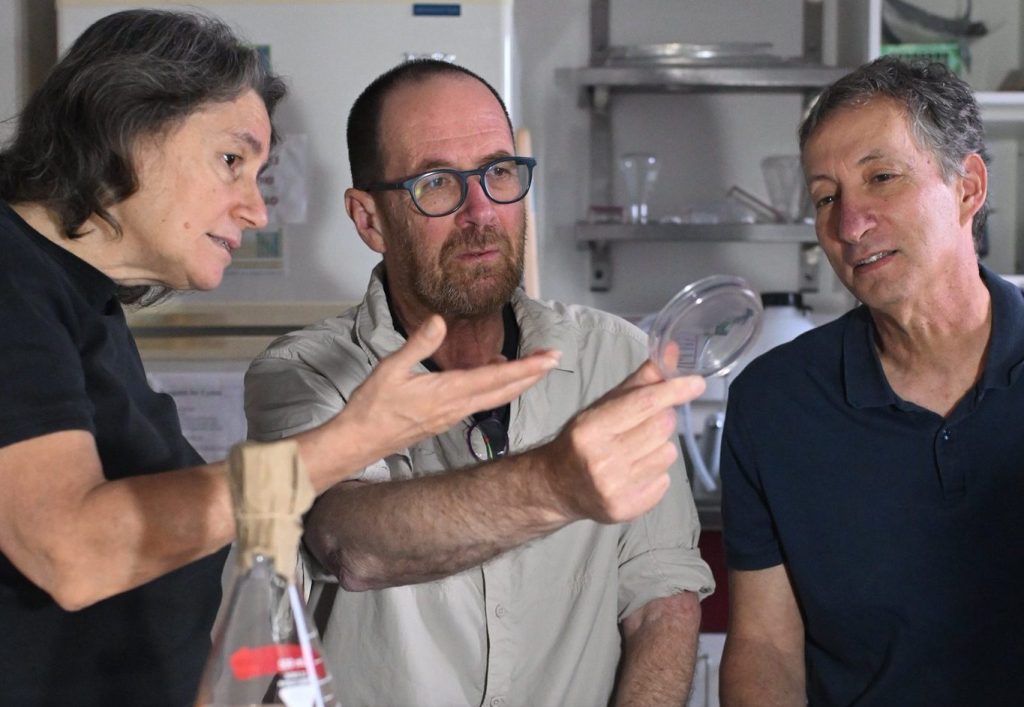The Trojan Horse Gene of the Marine Virus
Technion Faculty of Biology researchers: Marine viruses use “hijacked” genes to take over bacteria and exploit their energy systems
Marine viruses deploy a sophisticated Trojan horse maneuver that enables them to dismantle the energy systems of ocean bacteria and use the breakdown products for self-replication. This finding comes from a study conducted at the Technion Faculty of Biology and published in Nature.
The Nature article is the result of a unique collaboration among three faculty members, Prof. Debbie Lindell, Prof. Oded Béjà, and Prof. Oded Kleifeld; and three young researchers – Dr. Omer Nadel, Dr. Rawad Hanna, and Dr. Andrey Rozenberg
Tiny cyanobacterial cells that live in the oceans play a crucial role in the global ecosystem, as they carry out photosynthesis to produce the organic carbon that serves as the basis of the oceanic food web. In the process they contribute significantly to oxygen production and carbon dioxide draw down from the atmosphere, influencing the global carbon cycle.
These essential bacteria are frequently attacked by viruses called cyanophages, which specialize in infecting and destroying marine cyanobacteria. During evolution, these viruses capture genes from cyanobacteria they had previously infected and integrated them into their own genome. The researchers focused on a gene called nblA, which is activated in cyanobacteria under stress conditions such as nutrient starvation. In such situations, it dismantles the cyanobacterial photosynthetic energy-harvesting systems to release amino acids vital for survival. Technion researchers have now shown for the first time that this process gives the viruses a significant advantage.
In cyanophages, a unique mechanism evolved whereby infection of the cyanobacterium triggers the same gene in the virus – nblA – to dismantle the energy-harvesting systems, but this time to the bacterium’s detriment. The amino acids released from this breakdown are used by the hostile virus for rapid self-replication. Thus, the virus converts the cyanobacterial host’s energy-harvesting system into resources for expanding its own population. This represents a sophisticated evolutionary move in which the virus harnesses the bacterium’s survival mechanism for its own benefit, exploiting the host’s resources and ultimately destroying it from within.

The study’s findings were made possible through collaboration between the three research groups, each specializing in different disciplines of biology, and through a combination of advanced technologies: precise genetic manipulations in cyanophages allowing comparison between viruses with and without the gene; advanced proteomics enabling real-time observation of all proteins (both bacterial and viral); and environmental metagenomics providing a global view of the phenomenon’s prevalence in marine systems around the world. Together, these approaches yielded a comprehensive systems-level understanding of virus–bacterium interactions in marine environments.
According to the researchers, this mechanism reduces by about 5% the amount of photosynthetic energy produced by oceanic cyanobacteria – a significant decline on a global scale, since these cyanobacteria drive key biogeochemical cycles on Earth and are responsible for a large share of the planet’s oxygen and organic carbon production. Such a change could impact global carbon and oxygen cycles and the ecological balance, from microscopic organisms all the way to the global climate.
The study was supported by the European Union’s ERC Advanced Grant and ERC Consolidator Grant, as well as by the Faculty of Biology, the Nancy and Stephen Grand Technion Energy Program (GTEP), the Israel Science Foundation, and the Simons Foundation.
Photo credit: Rami Shlush, Technion Spokesperson’s Office





